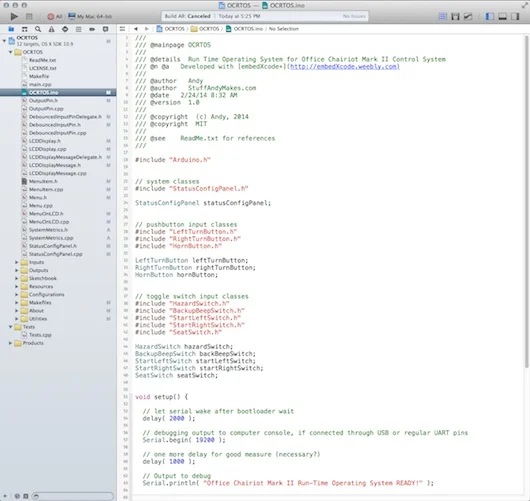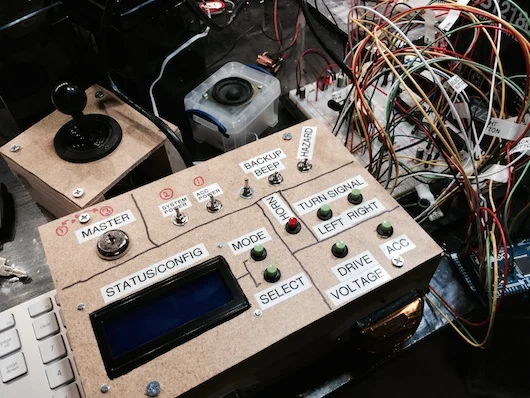What is electric, goes somewhere between 15 and 20 miles per hour and has an Ikea chair on it?
The Office Chairiot Mark II is the second generation of motorized office chair brought to you by yours truly. Why motorize an office chair? That's a silly question and I will not dignify it with an answer. Office chairs are boring. Plus, on a hot summer day, I walk too slowly between our office buildings in ARIZONA. The Office Chairiot Mark II can do it in a fraction of the time and I sweat far less driving it.
The Office Chairiot Mark II uses WAY too much horsepower for its weight (3/4 HP for each of its two drive wheels). The twin engine (DC motor) design gives it TWICE the power of the same model with only ONE engine. It's TRUE! The motor run on 24 volts. The batteries are 12-volt AGM sealed batteries. About 18 Amp-hours of energy each. The motors are 500 Watt brushed DC scooter motors. The drive wheels are rear scooter wheels. The front wheels are smaller scooter wheels on heavy-duty caster swivels. Those front wheels are the reason I don't know the top speed: They start to oscillate violently around 15 MPH.
Steering on the Office Chairiot Mark II differential and controlled via a single, user-friendly joystick. The twin engines are computer-controlled through a dual-channel robotics controller capable of 60 amps per channel. Yeah, I don't know what that means, either. But it sounds totally bad-ass on paper. The controller is a Sabertooth 2x60 from Dimension Engineering.
The control panel is completely over-complicated: It wants to be the instrument panel in a Boeing 787 Dreamliner when it grows up. Who doesn't want to run into a cockpit in a non-threatening way and push a hundred buttons and flip a hundred switches?? Besides, flying a real airliner is hard and expensive and dangerous if you don't know what you're doing. Sit in the Office Chairiot Mark II and push buttons and flip switches to your heart's content. The only passenger going down on this flight is the pilot. (That's called, "personal responsibility," FYI.)
As of today, I am very busy eating up all of my spare time writing the firmware for the command console. It's written in C++ using embeddXcode+, an amazing piece of Xcode add-on/tweaking engineering that allows you to build AVR/Arduino firmware using Apple's very excellent Xcode IDE. I will write an article on using that shortly, I promise. Here's a screenshot of it in action:
The button, switch and LCD test rig I'm using temporarily to build the firmware is this little mess of pressboard, components, wires and labels:
This test panel and the accompanying modules (joystick and speaker) are allowing me to test the firmware code as I write it. That mess of wires to the right of the panel is the breadboard with the turn signal relays, sound module, wireless receiver for the alarm remote (did I mention this has a wirelessly armed alarm?) and some other MOSFETs for controlling things on board.
I'll post more information as I get things more baked.






